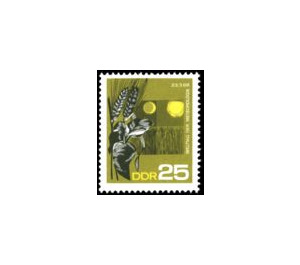World Meteorology Day - Germany / German Democratic Republic 1968 - 25 Pfennig
Theme: Calender
| Country | Germany / German Democratic Republic |
| Issue Date | 1968 |
| Face Value | 25.00 |
| Color | green |
| Perforation | K 13 1/2: 13 |
| Printing Type | offset |
| Stamp Type | Postage stamp |
| Item Type | Stamp |
| Chronological Issue Number | 1087 |
| Chronological Chapter | GER-DDR |
| SID | 13853 |
| In 14 Wishlists | |
Meteorological Service of the GDR On the occasion of the 75th anniversary of the Meteorological Main Observatory Potsdam and the World Meteorological Day on March 23, 1968, the Ministry of Posts and Telecommunications of the German Democratic Republic publishes three special stamps in sep. The meteorology on stamps The man with his great technical possibilities and means, like his ancestors a thousand years ago, depends on the weather. The desire to forecast the weather for certain periods of time is therefore as old as humanity itself. It is therefore a matter of course that every state in the world maintains a meteorological service. Now the task of such a service is not only to give weather forecasts, but also to study the atmospheric processes that collectively make up the weather. In addition, the effects of the weather on humans, the flora and fauna, and finally on the activity of man himself are examined. In the German Democratic Republic, these tasks are performed by the Meteorological Service, which is located in Potsdam with its central facilities. The special stamps of the German Democratic Republic should give an insight into the work of the Meteorological Service. By order of the World Meteorological Organization, March 23 of each year was declared World Meteorological Day. This day is always under a specific motto. For the year 1968, this motto is "Meteorology and Agriculture". For this reason, the 25-pfennig mark shows an agricultural motive in connection with the influence of the weather day and night. The signs for sun and moon have only a symbolic character to represent the daily change of brightness and darkness, which also has a decisive influence on the development of plants.


